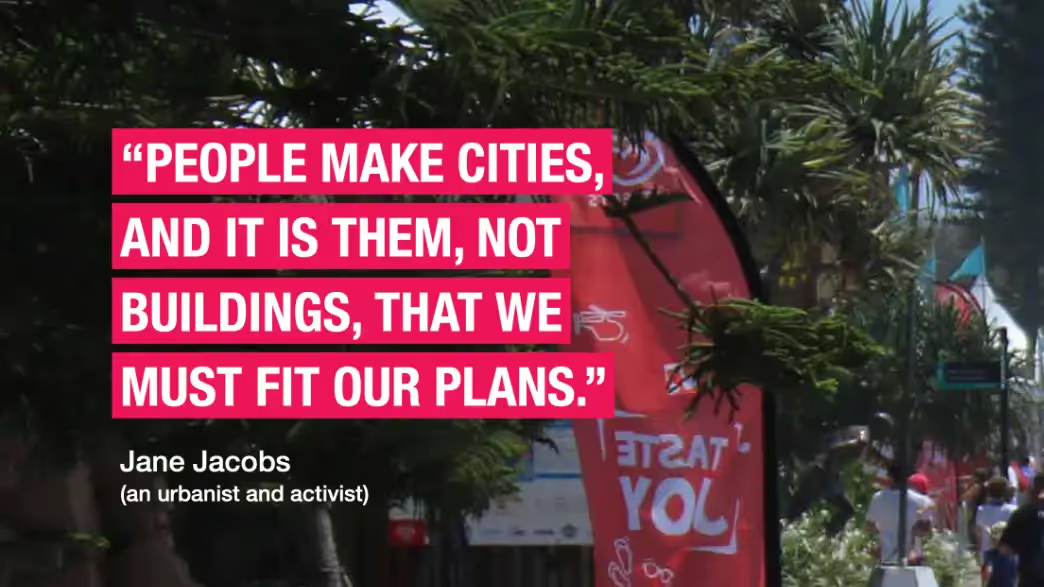Esplanade Road Closure
They Studied the Pavement, Not the People

The council likes to quote Jane Jacobs: “People make cities, and it is them, not buildings, that we must fit our plans.”
But when it comes to Surfers Paradise, their own research shows they don’t really believe it.
Back in 2020, they released a 140-page report. It catalogued the state of our parks, roads, curbs, street furniture, lighting, and paving. It listed projects like Appel Park, Palm Avenue walkway, Cavill Park. All important things — but nowhere in those 140 pages did they stop to ask: what makes Surfers Paradise unique? Why do people come here? What is its character? Who drives its energy?
Then they asked for input from people who don’t live here.
By 2023, not much had changed. The new Concept Plan still treated Surfers like a municipal audit, not a cultural icon. It even described us as “wild and wacky” — as if that summed up the people who live here, work here and make this city extraordinary. The people here are not like suburban Goldcoast. The demographics show it. So where is the analysis of the people and the cultures who live in and visit Surfers Paradise to whom “we must fit our plans”?
And that’s the problem. Without a true understanding of Surfers culture, the guiding principles are directionless. We don’t get bold ideas that show off our strengths — we get borrowed suburban solutions.
But Surfers Paradise isn’t a suburban town. It’s a mini-Manhattan on the beach, with the world’s largest ocean lapping at the base of Australia’s tallest towers, in a subtropical climate where the air and sea are the same temperature.
This place deserves its own story. Its own iconography. A Surfers Paradise way.
Instead, what we’ve been given is a plan that fails to understand its people — and in doing so, risks erasing what makes Surfers Paradise one of the world’s great destinations.
What can you do?
Take our expanded survey
If this matters to you, please join us in speaking up now.
Send your letter to the local member
Contact the Council
Sign on to stay in touch
Click the link below and enter your email in the space provided. We will keep you up-to-date with the latest developments.

